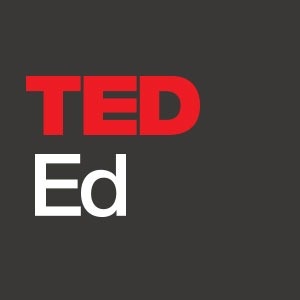2021-07-15
[public] 848K views, 28.5K likes, dislikes audio only
Explore the economic strategy of quantitative easing, where a central bank purchases bonds in order to boost the economy.
--
In March 2020, the COVID-19 pandemic rocked economies worldwide. Millions of people lost their jobs, and many businesses struggled to survive or shut down. Governments responded with some of the largest economic relief packages in history— the US alone spent $2.2 trillion on a first round of relief. So where did all this money come from? Jonathan Smith explores the strategy of quantitative easing.
Lesson by Jonathan Smith, directed by Serin İnan, Kozmonot Animation Studio.
Support Our Non-Profit Mission
----------------------------------------------
Support us on Patreon: http://bit.ly/TEDEdPatreon
Check out our merch: http://bit.ly/TEDEDShop
----------------------------------------------
Connect With Us
----------------------------------------------
Sign up for our newsletter: http://bit.ly/TEDEdNewsletter
Follow us on Facebook: http://bit.ly/TEDEdFacebook
Find us on Twitter: http://bit.ly/TEDEdTwitter
Peep us on Instagram: http://bit.ly/TEDEdInstagram
----------------------------------------------
Keep Learning
----------------------------------------------
View full lesson: https://ed.ted.com/lessons/how-do-governments-create-money-out-of-thin-air-jonathan-smith
Dig deeper with additional resources: https://ed.ted.com/lessons/how-do-governments-create-money-out-of-thin-air-jonathan-smith#digdeeper
Animator's website: https://www.kozmonot.tv
----------------------------------------------
Thank you so much to our patrons for your support! Without you this video would not be possible! Nathan Giusti, Helen Lee, Anthony Benedict, Karthik Balsubramanian, John Hong, Annastasshia Ames, Amy Lopez, Vinh-Thuy Nguyen, Liz Candee, Kathryn Vacha, Ugur Doga Sezgin, Anthony Arcis, Chung Wah Gnapp, Karmi Nguyen, Yelena Baykova, Harshita Jagdish Sahijwani, Nick Johnson, Carlos H. Costa, Roberto Patrick, Les Howard, Jennifer Kurkoski, Ryan B Harvey, Abhishek Bansal, Akinola Emmanuel, Jose Arcadio Valdes Franco, Karl Laius, JY Kang, Heidi Stolt, Alexis Hevia, Christina Salvatore, Karlee Finch, Michael Goldberg, Denise A Pitts, Doug Henry, Kristiyan Bonev, Keven Webb, Mihai Sandu, Deepak Iyer, Javid Gozalov, Kyanta Yap, Rebecca Reineke, William Biersdorf, Patricia Alves Panagides, Valeria Sloan Vasquez, Yvette Mocete, Cyrus Garay, Samuel Barbas, Brighteagle, LadyGeek and Curtis Light.
/youtube/video/XNu5ppFZbHo
/youtube/video/GFTKKyYSCKs?t=32
/youtube/video/GFTKKyYSCKs?t=136
/youtube/video/XNu5ppFZbHo
/youtube/video/p7HKvqRI_Bo
/youtube/channel/UCsooa4yRKGN_zEE8iknghZA

